The only way to get a medical degree for less than eighty bucks.
The original Trauma Center game on the Nintendo DS was an odd but fun game that made innovative use of the stylus and the touch screen. Sort of a “surgery simulator,” Trauma Center placed you in the role of new doctor Derek Stiles as he evolves as a surgeon. Trauma Center was successful on the DS, and with the launch of the Wii, it seemed possible to bring the franchise to a wider audience by making use of the Wii-mote’s motion sensors to replace the touch screen of the DS. In doing so, Trauma Center: Second Opinion becomes one of the most fun and quirkiest games that you can currently buy for your Wii, even though it is essentially a direct port of the original adapted for the Wii.
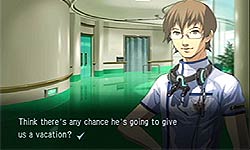
Trauma Center places the player in the role of young Derek Stiles, a doctor that has an extraordinary ability for surgery and healing called simply the “Healing Touch”. Due to his ability, Dr. Stiles is placed in a position to try and combat GUILT, a new type of disease created by “medical terrorists.” This sets the stage for Derek to find himself in a number of situations attempting to save lives, although surprisingly, not all of them require surgery.
In Second Opinion, you will operate on individuals using a number of surgical instruments such as bandages, lasers, ultrasounds, hypodermic needles, defibrillators, scalpels, and even stitches. The player chooses the instrument with the analog stick on the nunchuk attachment and performs motions with the Wii-mote. For example, to stitch together a wound, the player would press the direction on the analog stick indicating the stitches, target the wound with the Wii-mote, and make a zig-zagging motion to stitch up the wound. When using a forceps to extract a foreign object from the body, you use the A and B buttons of the Wii-mote to simulate pinching as you move the object. Using the defibrillator requires you to move both the nunchuk and the Wii-mote towards the screen to simulate placing the defibrillator on the patient’s chest. There are even times where it becomes necessary to turn objects, making the player actually rotate the Wii-mote, pull it towards himself, or push it away to achieve goals. The use of these motions goes a long way towards making the experience more immersive than possible on the DS original.
The storytelling is one of the worst parts about Trauma Center. The actual story isn’t bad, with mature and thought provoking themes such as terrorism and euthanasia. However, the presentation can be a bit boring at times. The entire game, when Derek isn’t in surgery, is told through the use of still, anime style drawings set in front of static backgrounds. There is no movement at all except for the still drawings moving on and off screen. Almost all of the dialogue is told through on screen text, and the player has to figure out what is going on through the sound effects. If there is the sound of shuffling paper, for instance, the player is to imagine the character represented by the still image reading or looking through some paperwork. While the short dialogue clips, which generally consist of a short uttered phrase, are well done, Trauma Center: Second Opinion could have definitely benefited from introducing some actual animation or more spoken dialogue to the game.
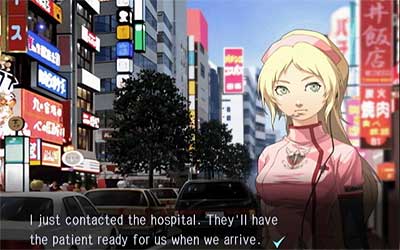
TC: SO requires a lot of speed and precision. Each operation gives the player an objective, and the player must use the tools at his disposal to achieve the goal, whether the goal is extracting glass from a wound, fixing a bone fracture, or excising tumors. As stated before, the use of the analog stick to choose instruments really speeds up the gameplay from the DS version, allowing changes to be done with the mere flick of a thumb. Also, Dr. Stiles can use his “Healing Touch” in the game to slow down time by, oddly enough, drawing a star while holding down the Z and B buttons (The drawing of a star is explained in the story), which can help tremendously in some of the quicker paced surgeries.
Second Opinion can become difficult at times with sometimes unclear methodology necessary to finish. The game is good about teaching the player how to use tools and when to use them, but there are times when simple trial and error will be the only way that a first time player will be able to proceed. Considering that there is a timer for every operation and that most wrong moves result in penalty, there isn’t much margin for error. There is also a line across the top of the screen that registers the patient’s vitals, with the game ending if their vitals reach zero. The vitals can temporarily be increased with the syringe, but in most procedures the vitals meter is steadily decreasing, and the speed of the decline increases with injuries, incisions, and bleeding. There isn’t much time to figure out what needs to be done, and sometimes trial and error is the only options open to the player. There are also quite a few operations that require arcade-like quickness, forcing the player to use one instrument, switch to another, use that, then switch again, all while watching the vitals and injecting when necessary, or sometimes having the revive the patient with the defibrillator. Fortunately, the player does have the option of switching the game’s difficulty level if things do get too tough.
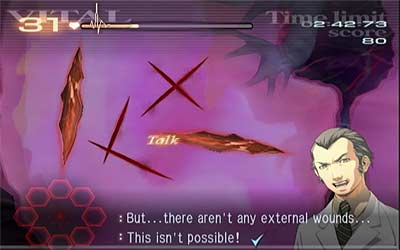
Ultimately, Trauma Center: Second Opinion is a fun experience for Wii owners. If you’re looking for a unique experience on your Wii, or even enjoyed the first Trauma Center, TC:SO is a good bet. There is enough freshness with the Wii-mote to warrant a second round for Second Opinion.
|
Preview
Come November, Atlus USA will have you on call 24/7. By Ryan Schultz
When Atlus released Trauma Center: Under the Knife for the DS, it quickly became one of the more unique titles to hit the handheld. Later this year when Nintendo’s new console, Wii, hits store shelves, Atlus is looking to expand the uncharted waters of the surgery genre with the game Trauma Center: Second Opinion.
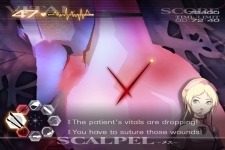
It should first be noted that Second Opinion was originally though of as a remake of the DS title. However, Atlus has recently stated the Second Opinion will be an original game, not a port. TC: SO takes place in the near future and puts you in the role of Doctor Kousuke Tsukimori. The year is 2018 and mankind is feeling the wrath of an incurable disease known as the Guilth. When the good doctor runs into someone with the virus, it turns out that the rookie doctor is the one who will lead humanity to a new future.
There are some big changes underway for the Wii sequel. The game now features updated character designs, sporting a more grown-up look as compared to their handheld counterpart. The game will also feature the voice work of some famous Japanese actors. At this time however, this only pertains to the Japanese version of the game. No word has been revealed as to whether the American version will also see some voice acting.
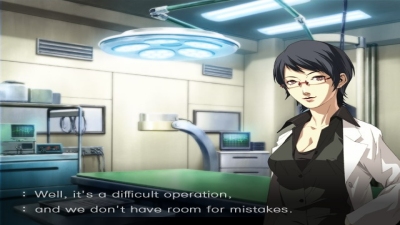
Of course, the biggest change of them all is how you will play the game once it’s released. Second Opinion is set to play more like an action game, with the Wii remote acting as your surgeon’s tool. While listening to the advice of your nurse, you will be able to make very precise cuts using the remote while using the nunchuck attachment in other places as well. This time around, the game will feature easy, medium, and hard settings, as well as new types of surgery which include broken bones and even heart transplants. Second Opinion will even feature a second playable character with accompanying missions. This should make for some pretty tense situations.
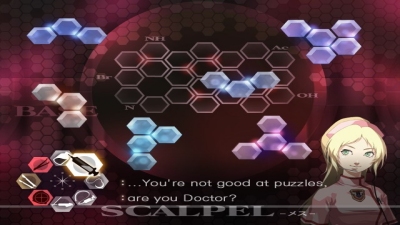
Finally, while the game has tentatively carried an ambiguous 2006 release date, it has been confirmed that Trauma Center: Second Opinion will indeed ship right along with the Wii as a launch title. The operating room heats up later this year.
